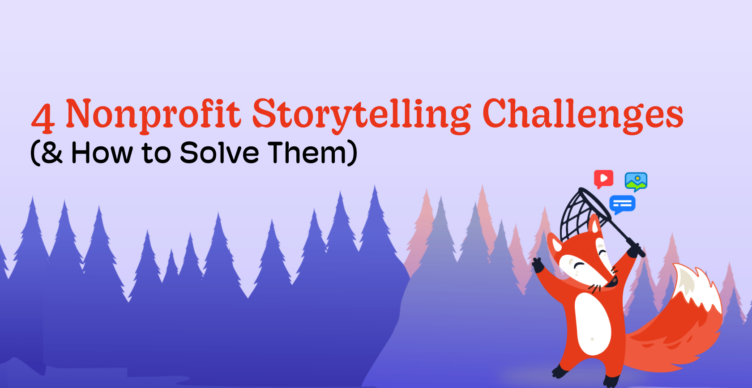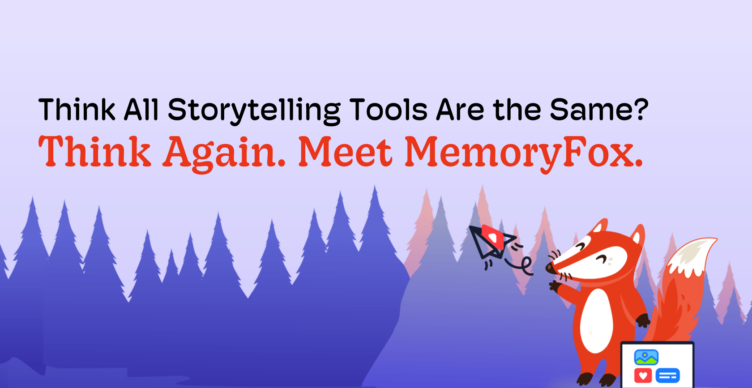Fundraising Tips, Nonprofit Holidays, Storytelling Strategy
Data + Storytelling: 3 Essentials for GivingTuesday
As GivingTuesday approaches, nonprofits everywhere are gearing up to showcase their work and inspire generosity. This global movement is a powerful opportunity to connect with your supporters—but standing out requires more than simply asking for funds. The majority of donors today want to know the impact your organization is creating and how their donation will directly contribute.
Supporters want to be assured that their donations will truly be impactful for the community you serve.
But how does one effectively communicate to potential donors that they would be contributing to making a lasting impact?
To make your campaign deeply resonate with potential donors, consider integrating these three essential data points into your GivingTuesday campaign:
- Secondary data from outside sources
- Your organization’s output metrics
- Your programmatic outcomes
These three types of data, paired with stories of transformation, can paint a compelling picture of the problem your organization is tirelessly working to solve, the plan or what your organization is doing to solve the problem, and the solution your programs are creating.
Here’s how you can use these 3 data points and stories of transformation to build a GivingTuesday campaign that inspires donors to fund your programs and partner with your mission to make a lasting impact.
1. Use Secondary Data to Highlight the Problem at Hand
The first step to inspiring your supporters is to highlight the importance of the overarching issue your organization addresses. Secondary data from external sources is a crucial tool for this. These external data sources can reveal the scale of the problem, helping donors understand why your work is essential.
Here are some examples of how to highlight a key issue your organization aims to solve by communicating secondary data from validated sources:
- Food Insecurity in the United States.
- Problem Statement: 47.4 million people (18 million households) in the United States were food insecure at some time during the year 2023.
- Source: USDA Economic Research Service, Key Statistics and Graphics
- Homelessness in Houston, Texas
- Problem Statement: Without additional funding, a nearly 60% increase in homelessness is predicted for Houston County by 2026.
- Source: Rice University Kinder Institute for Urban Research and The Coalition for the Homeless of Houston/Harris County
Let’s say your organization works to provide clean drinking water in regions facing a water crisis. You could start your GivingTuesday message with a story of a specific community member, like Sada, a mother of three who previously had to walk miles every day to fetch clean water. Then, pair this story with data that shows the scope of the problem—like how, according to the World Health Organization, globally, 1 in 3 people don’t have access to safe drinking water.
This combination of Sada’s personal struggle and the broader statistics tells a powerful story to your supporters. Sada’s challenge isn’t unique, but your organization is taking specific steps to make sure she and others no longer have to live this way. By helping funders see how widespread the issue is, you can ignite a sense of purpose.
2. Share Your Organization’s Output Metrics
Once your donors see the scale of the problem, the next question they’ll likely ask is, “What are you doing about it?” This is where your organization’s outputs come in. Outputs are tangible measures of the work your nonprofit is actively doing to combat the issue. For donors, these numbers reveal the scale of your efforts, reassuring them that you have the knowledge of how to solve the problem and that you are taking action to make a difference.
Returning to the water crisis example, let’s consider the outputs from your organization. You might share that, in the past year, your nonprofit has drilled 50 wells across 5 local communities, providing safe water access to over 150,000 individuals. Sharing these outputs not only shows that you have a clear plan in place that is being implemented but also emphasizes your organization’s operational scale and reach.
Imagine how powerful it would be for donors to see a story of impact like Sada’s alongside statistics that reveal how many more people you have served. They will see that while your organization made a difference for Sada, it’s not stopping there. You are committed to making similar changes for thousands more, and their support on GivingTuesday can help expand your reach.
3. Highlight Program Outcomes to Showcase Meaningful Change
While outputs demonstrate the extent of your organization’s work, outcomes are about the tangible changes your programs bring about—the actual impact on lives. Outcomes are the transformations made possible through your organization’s activities, and they help complete the “story” of real impact for your donors.
For example, after providing Sada’s village with a water well, an outcome could be that children are healthier and able to attend school regularly. Perhaps the school attendance rate in Sada’s village increased by 20% within a year of the water well being installed. Sharing these kinds of results shows supporters that their donations have meaningful, measurable impacts on people’s lives.
The outcomes of your organization’s programs are what donors want to be a part of!
Presenting a blend of secondary data, outputs, and outcomes will help funders see your organization’s impact as part of a cohesive narrative. They will come to understand not only that Sada now has clean water but that her family’s overall health has improved and that her children can attend school regularly. This final piece, the outcome data, offers a glimpse into the short-term success of your organization’s solution to the problem, helping supporters feel confident that their contributions will make a difference and will drive real, lasting change.
Bringing It All Together: Data + Storytelling for Transformative Impact
Combining these three data points—secondary data, outputs, and outcomes—has the power to elevate your GivingTuesday campaign from a standard appeal to an inspirational movement.
But for these data points to truly resonate, you must also embrace storytelling. Data alone can feel impersonal or overwhelming, especially for donors who may not understand the numbers at face value. However, when paired with stories, data becomes a vehicle for empathy and connection.
Consider blending data points with stories at each stage of your GivingTuesday campaign:
- Start with Secondary Data. Share statistics or a compelling fact to grab your audience’s attention, then put a name to those numbers by telling a story of someone your organization has helped overcome the problem. Make the statistics more than just numbers on a page or screen, make them real.
- Outline Your Outputs. Use numbers to show your organization’s investment in addressing the problem and the scale of your operations, but explain what these outputs mean to real people—children in Sada’s village no longer getting sick and can attend school, families now able to farm sustainably due to water access, and so on.
- Showcase Outcomes. Finally, emphasize the direct changes that have occurred because of your organization’s work. Highlight improved school attendance, health outcomes, or community stability, creating a holistic picture of how your program transforms lives.
As you prepare your GivingTuesday campaign, challenge yourself to dig deep into your organization’s data and stories. Select one or two stories that exemplify the impact your organization is striving to create. Show potential funders how they can be part of a larger narrative that includes making a real difference in the lives of others. Outline how their support can make a powerful impact on GivingTuesday.
Your Next Steps: Inspire Generosity by Connecting Hearts and Minds
To get started, assess your organization’s available data for GivingTuesday.
- What secondary sources can underscore the problem you’re addressing?
- Do you have outputs and outcomes that vividly illustrate your impact?
- Finally, identify stories from your program participants or community members that will serve as the campaign’s heartbeat.
Your story could be about an individual like Sada or a family, school, or community whose lives were transformed because of the support you receive. Remember, GivingTuesday isn’t just about dollars raised; it’s about engaging people to partner with you in creating meaningful impact. It’s a day to build relationships that will sustain your organization long after the holiday season ends. So, on this GivingTuesday, use data and stories to connect hearts to minds, creating a groundswell of support that will propel your mission forward for years to come.

About the Author
Janeth Carreon
Impact Coordinator, Social Impact Solutions
Janeth Carreon works to keep projects and our team moving forward efficiently. In her role, she consistently manages surveys going out to clients and surveys coming into Social Impact Solutions. She also contributes to projects by preparing impact data for analysis and reporting. Janeth and the Social Impact Solutions team will work together to provide you with the best possible impact data so your company can thrive.

About the Editor
Lauren E. Vanderpool
Co-Founder, Social Impact Solutions
All too often, organizations are under-resourced and settle for suboptimal systems and outcomes. Lauren is extremely passionate about helping organizations succeed by adopting best practices to enhance organizational growth, reach, and overall impact. Lauren has a background in public health and evidence-based research. She leverages her expertise in these areas to help organizations better understand how they can measure their impact and communicate this information to stakeholders in a clear and compelling manner. If you need help measuring and/or marketing your organization’s impact, Lauren and the Social Impact Solutions team are eager to serve you.




